Project 1 – Autobiographical Self-Portraiture
Exercise
Reflect on the pieces of work discussed in the project in your learning log and do some further research of your own.
- How do these images make you feel?
- Do you think there’s an element of narcissism or self-indulgence in focusing on your own identity in this way?
- What’s the significance of Brotherus’s nakedness?
- Can such images ‘work’ for and outsider without accompanying text?
- Do you think and of these artists are addressing wider issues beyond the purely personal?
Make some notes in your learning log.
Francesca Woodman was born in Denver, Colorado in 1958. She started taking photographs when she was 13. She committed suicide when she was 22 years old in New York. Between the years of 1975 and 1977, Woodman attended the Rhode Island School of Design. A lot of her images taken in this time are believed to be work for her college work; Space2 could be one such work. In 1976 she photographed for her project Space2. She worked in her studio, which was a room above a store in Rohde Island called Pilgrim Mills. The room was unfurnished and unheated. She used a square-format camera. All her images for this projects are self-portraits. Woodman would experiment with the shutter speeds and the lighting to create a sense of movement in different parts of her body. One image where this is very noticeable is this one:
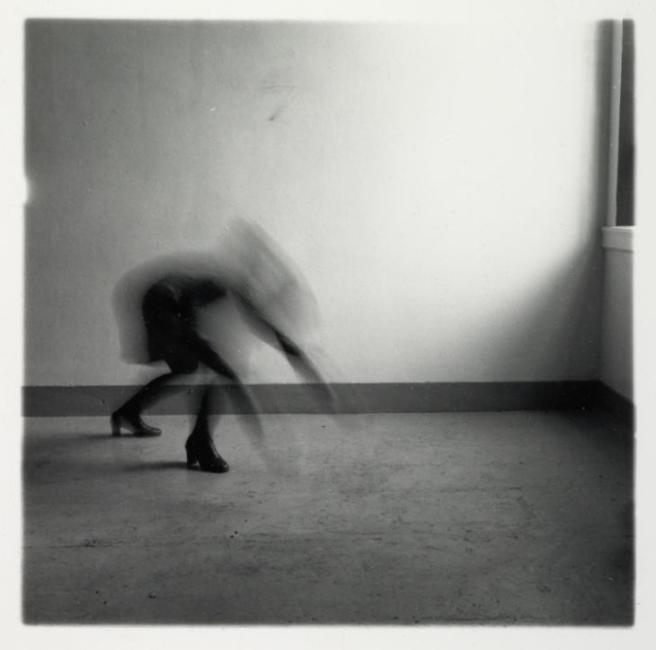
She has a strong stance and appears to be lunging forward, everything fro her legs upwards is blurry. Peggy Phelan, a feminist scholar believes that Woodman’s movement is an ‘essential aspects of her self-portraits’. Jus-Ch’i Liu, who is a Professor at the National Yang-Ming University, stated that ‘the blurs dissolve corporeal boundaries and register Woodman’s refusal to allow her body to be defined by the viewer’. She was able to create art out of a bare room and herself. She did not use any studio lighting, she relied on the light from the windows or the room lights. Her images focus on her own identity and offer glimpses of her personality. Even today, the meaning behind her images is debated. Some see Woodman as a feminist, however her father, George Woodman stated, that “Francesca did not see herself as a feminist”. Cindy Sherman, who is a well-known American photographer, did not believe she was a feminist, and “She used herself organically, not to make a statement”.
I can see why people may believe that Woodman’s photographs are self-indulgent, as it appears that she focused on herself and her own identity. But a friend of her asked why she photographed herself obsessively and she answered “It’s a matter of convenience, I am always available”. So I do not think Woodman saw it as being self-indulged. I believed she was experimenting and exploring her own identity. People tend to label Woodman’s work as narcissistic. The definition of narcissism is an “inordinate fascination with oneself; excessive self-love; vanity”. I personally do not think her work is narcissistic.
The use of nudity in Woodman’s images is artistic. The problem is there are many images taken by men of women naked and called art, but not that many images taken by a women of a naked women. There is a huge difference in the way the photograph is approached and the subject is treated. These images tend to show the truth. To Woodman nudity is just being unclothed. Identity can be seen through clothing, so by removing it your identity changes. The nakedness in her photographs seems to represent sexuality but also innocence. The use of the mirrors in her images could relate to Jacques Lacan’s Mirror Phase. She could be just comfortable with her body and didn’t mind showing it off. She often obscures her face or covers part of her body, this could be seen as hiding from her point of view. Her images may represent her feelings and problems she was having, she could have been using photography as a coping method. Chris Townsend stated “Woodman’s self-portraits demonstrate an awareness that the genre is as much concerned with how representation is effected as it is with offering supposedly profound truths about the artist who effects that representation” (Townsend). I believe her images do address wider issues other than issues on a personal level. I find her images thought provoking and mysterious. But also suggestive, due to the way her face is obscured or the way in which she is positioned it allows the viewer to come to their own conclusion.
Elina Brotherus is a finish photographer, who went to the university of art and design, and afterwards did a residency in France. She photographs herself and uses events that have happened to her as inspiration for her images, this could also be seen as a coping method. In the Q&A sessions during a talk Brotherus gave to OCA students, one of the students asked where she would put some else in the picture instead of her self. Her answer was no, because she is telling her own story and it wouldn’t work with some else. She uses an example of when she was having IVF and took a photograph of the pregnancy test; she said it just wouldn’t work with some else. This also gave me the impression that all her photographs are personal and emotional. Her work Annunciation looks at her experiences whilst having IVF treatment. She is addressing a subject, infertility, which many still see as a taboo. Annunciation represents the false annunciations. She says its like waiting for the angel who never shows up. It is a very personal subject for Brotherus and she still finds it too upsetting to give interviews about. She states that she finds it as a way to distance herself through her photographs, but I find they have a way of connecting with the viewer; as many of the subjects and emotions she shows are things we all face and can all relate to.
In Model Studies, Brotherus uses nudity in her images. Looking at her images I do not find the use of nudity a representation of art but more a personal view. In Model Studies, she did not want to create a ‘psychological’ portrait but she wanted to show the subject as a thing to investigate. She sees the person in the photographs as a model, similar to ones in paintings. She wants to investigate the ‘external properties’ not the ‘inner properties’. Similar to Woodman, Brotherus obscures her face in the majority of the images. I believe her images could be classed as self-indulgent as she is focusing on herself. I do not think her images are narcissistic either as she is using herself in the images because she is telling her story and with someone else in the image it wouldn’t work.
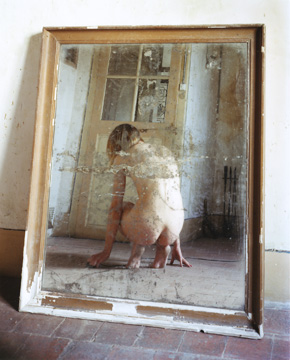
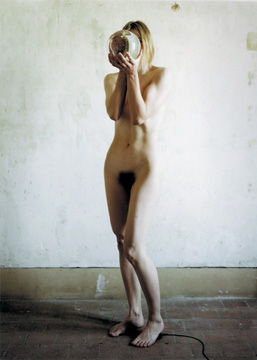

Susan Bright is an Australian writer and curator, who have specialized in photographing the representation of pregnancy and motherhood. Bright’s work Home Truths: Motherhood and Photography challenges the changes of autobiographical approaches to online photography and the view of the mother in our culture. In her book, Bright looks at history of the representation of the mother in art. She notes that there was a shift due to the work of Mary Kelly. Before this the main representation was in the form of paintings like the Madonna and Child. In 1974 Mary Kelly created a body of work called Primapara. It was in this work that showed the differences between the way a man would photograph and how a woman would photograph. More and more photographers are exploring this area, such as Harry Callahan, Imogen Cunningham, Tina Modotti and Barbara Morgan. Kinderwunsch is a series by the photographer Ana Cassa Broda. Broda decided to document the process of having her second born child. Elinor Carucci is another photographer who has photographed this topic. She documented her pregnancy and carried on until her twins eight birthday. I like this series as it shows the emotional development and bond between the twins and their mother. Susan Hiller took photographs of herself everyday during her pregnancy. She didn’t intend to create a body of work from the images but she decided to let them show how her body changed, specifically her stomach during her pregnancy. She stated that her stomach was “the section of the body you couldn’t talk about, the pregnant part”. I believe Susan Bright is addressing a wider issue. Whilst gender roles have changed there is still some aspects, which are ‘hidden’. In an interview Bright stated “I thought, oh my god, this celebrity mum phenomenon, it’s everywhere. I wanted to see what people were doing in critical terms, in fine art…it just needed the space to be shown and talked about. It was still quite the taboo subject, and that’s ridiculous” (Bright).
Sally Mann is an American photographer born in 1951. One of her projects involved photographing her family. Which included images of her children playing naked. She produced 65 photographs in black and white, the images included the children swimming, reading, napping, and playing. Her photographs deal with other themes as well such as injury, insecurity and sexuality. Some critics have said her work is an example of child pornography, but Mann says when she was growing up she would often play naked. This is how she has raised her children.
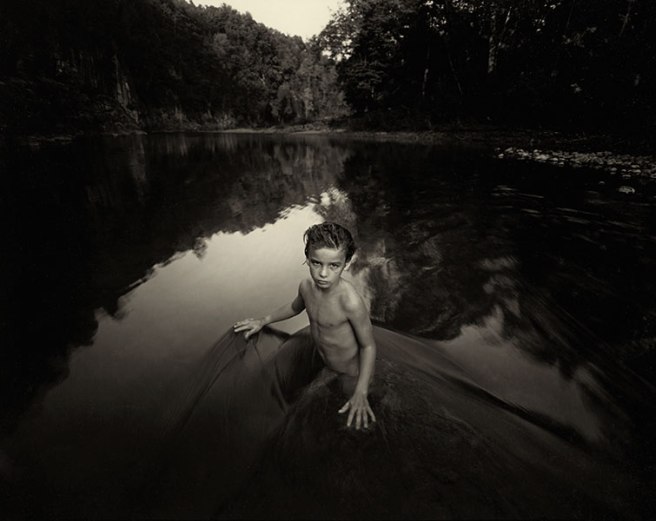
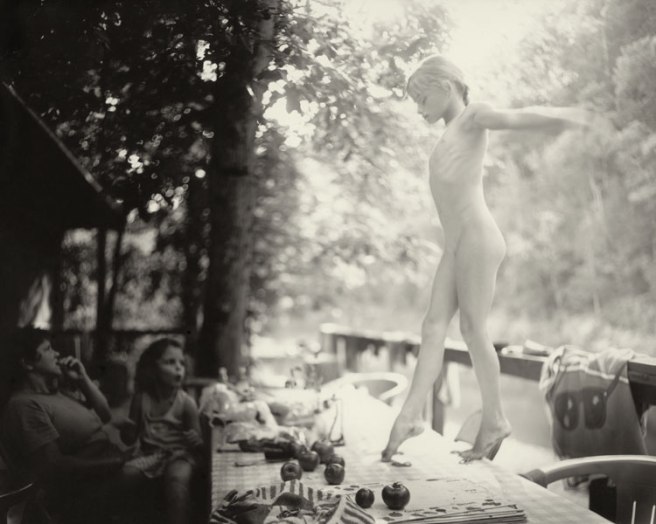
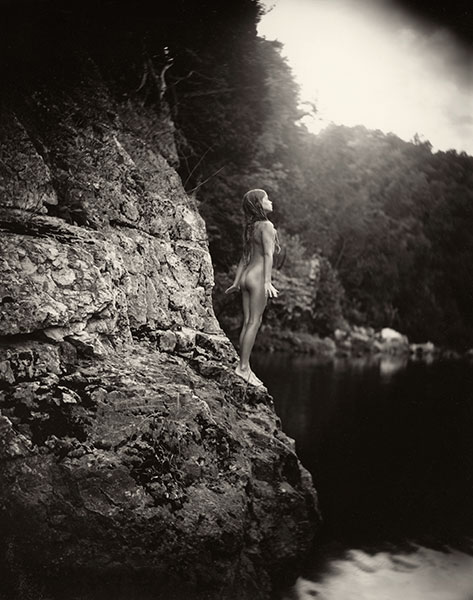
Tierney Gearon created a project called I Am A Camera, which features images of her children often naked. Her images are not posed but do contain props, which she has added. Gearon attempts to show the line between childhood and adulthood and how it changes.
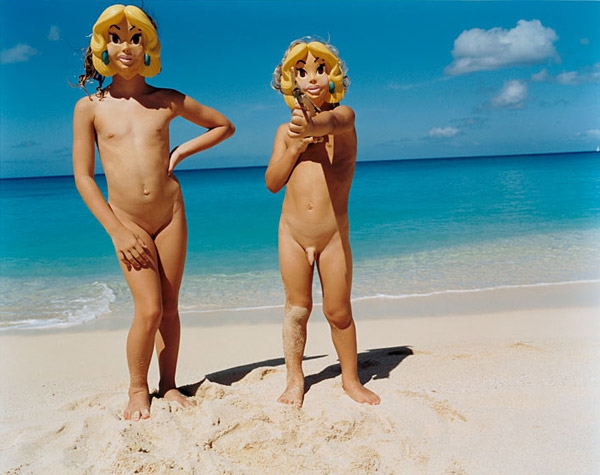
Gilliam Wearing took self-portraits using familial impersonation. By doing this Wearing is attempting to explore her own personality and identity.
Mann and Gearon’s images of their children naked are just images of their children growing up, due to culture, the way someone’s been brought up or even where you live, this may be a common sight. I believe it is unfair for people to say Mann’s work is pornography, as she is showing it as art. But there is a problem with how the viewer perceives the images.
I believe it depends on the image, if it can work without text. If the image or the intent is unclear, text is helpful. Without it the viewer must draw their own conclusions. So if the artist is trying to convey a certain message, I believe that accompanying text is helpful. But it is nice to be able to look at a photograph and draw your own conclusions from it.
A Place Called Space. Francesca Woodman. [Online]. <a-place-called-space.blogspot.co.uk/2012/11/Francesca-woodman.html> [Accessed: 15th April 2016].
Bright, S & Stephanie Chapman (2013). Home Truths: Photography and Motherhood. London: Art Books.
British Journal of Photography. The Mother. [Online]. <www.bjp-online.com/2013/10/the-mother/> [Accessed: 13th of April 2016].
Curating Photography. Susan Bright Independent Curator of Photography, New York. [Online]. <photocurating.net/?p=65> [Accessed: 18th April 2016].
Daily Serving. Gillian Wearing Wearing a Mask of Gillian Wearing. [Online]. <www.dailyserving.com/gillian-wearing-wearing-a-mask-of-gillian-wearing/> [Accessed: 19th of April 2016].
Dictionary.com. Narcissism. [Online]. <www.dictionary.com/browse/narcissism> [Accessed: 12th April 2016].
Elina Brotherus. Elina Brotherus in conversation with Birgit Eusterschutte. [Online]. www.elinabrotherus.com/assets/pdf/interviews/eusterschutte_conver_en_05_pdf/ [Accessed: 13th April 2016].
Gearon, T. I Am A Camera. [Online]. <www.tierneygearon.com/exhibitions/i-am-a-camera/> [Accessed: 18th of April 2016].
Lacan, J & Bruce Fink. (2004). Ecrits: A Selection. London: W. W. Norton & Company.
Liss, A. (2009) Feminist Art and the Maternal. USA. University of Minnesota Press.
Liu, J, (2004) Francesca Woodman’s Self-Images: Transforming Bodies in the Space of Femininity. Woman’s Art Journal, Vol. 25 (no. 1), pp. 26-31.
Mann, S. About. [Online]. <sallymann.com/about/> [Accessed: 17th Of April 2016].
OCA. Forum. [Online]. <www.oca-student.com/content/photographerstalking?page=1#comment-72335> [Accessed: 15th March 2016].
Pedicini, I. Francesca Woodman: The Roman Years: Between Skin and Film, Rome 2012.
Phelan, P, (2002) Francesca Woodman’s Photography: Death and the image one more time, Signs. Vol. 27 (no. 4), p.p. 979-1004.
Slash. Elina Brotherus Annonuciation. [Online]. <slash-paris.com/en/evenments/elina-brotherus-annonciation> [Accessed: 16th of April 2016].
Tate. Space2, Providence, Rhode Island. [Online]. <www.tate.org.uk/art/artworks/woodman-space2-providence-rhose-island-1975-1978-ar00350/text-summary> [Accessed: 14th April 2016].
The Telegraph. Francesca Woodman: eerie visions from a life cut short. The Telegraph. [Online]. <www.telegraph.co.uk/culture/art/art-features/8130041/Francesca-Woodman-eerie-visions-from-a-life-cut-short.html> [Accessed: 12th April 2016].